Cryptocoryne lutea
Scientific name: Cryptocoryne lutea
Family: Araceae
Maximum size reached under cultivation: 10 - 15 cm (3.94 - 5.91 inch)
014
Recommended pH range: 6.6 - 7.5
Recommended water hardness: 4 - 18°dGH (71.43 - 321.43ppm)
0°C 32°F30°C 86°F
Recommended temperature range: 22 - 28 °C (71.6 - 82.4°F)
Preferred propagation method: Runners
Native to: Sri Lanka
Growth rate: Normal
Recommended substrate: Fine gravel
Lighting requirements: Medium
Ideal placement in tank: Midground
Family
Araceae
Origin
Cryptocoryne lutea is native to Sri Lanka, where it thrives in slow-moving streams, marshes, and flooded areas. It naturally grows in shaded, nutrient-rich environments and is well adapted to fluctuating water levels, allowing it to grow both submerged and emersed.
Ideal Placement
Midground
Propagation
Cryptocoryne lutea propagates by sending out runners from the mother plant. Small plantlets develop along these runners, gradually forming their own root systems. Once they are well established, the runners can be separated, and the new plants can be relocated to different areas of the aquarium. This process can take several months, as the plant first focuses on root development before spreading. Once fully established, it will continuously produce new plants, creating dense growth over time.
Growth and Maintenance
This species has a moderate growth rate and thrives in fine gravel or nutrient-rich substrates. It benefits from root fertilizers, especially during the early stages, to promote strong growth. Like other Cryptocoryne species, it is best left undisturbed after planting, as frequent relocation can lead to "Crypt Melt," where leaves temporarily decay before the plant regrows. Once settled, Cryptocoryne lutea is a hardy and low-maintenance plant.
Lighting Requirements
Moderate lighting is ideal for Cryptocoryne lutea. It can tolerate lower light conditions but will grow more slowly. Under stronger lighting, its leaves may develop a more intense coloration, often displaying a bronzed hue. However, excessive light can encourage algae growth on its broad leaves, so a balance is recommended.
Difficulty
Easy to moderate. This plant adapts well to various water conditions, tolerating a pH range of 6.6 - 7.5 and a hardness range of 4 - 18°N. It thrives in temperatures between 22 - 28°C (71.6 - 82.4°F), making it suitable for most freshwater aquariums.
Short Description
Cryptocoryne lutea is a versatile and hardy plant commonly used in aquascaping as a midground plant. It features narrow, slightly wavy leaves that range from green to bronze, depending on lighting conditions. Once established, it spreads gradually, forming attractive clusters that enhance the natural look of the aquarium. Though slow to acclimate, it is a resilient species that requires minimal maintenance once rooted.
Submersion and Aquascaping
This species is highly adaptable and can grow both submerged and emersed. In its natural habitat, it is found in marshy areas, riverbanks, and even flooded woodlands, often growing emersed during dry seasons and submerged when water levels rise. In aquarium conditions, it thrives fully submerged, while in paludariums, it can develop thicker, more rigid leaves when grown emersed. This adaptability makes it a valuable choice for a variety of aquascaping styles.
Compatibility
Cryptocoryne lutea is compatible with most freshwater fish and invertebrates. Its sturdy leaves make it less appealing to herbivorous fish, making it a great choice for planted tanks with species that might otherwise nibble on delicate plants. It is also well-suited for shrimp tanks, as its dense foliage provides shelter and grazing surfaces for small invertebrates.
Maintenance and Care
Regular maintenance includes trimming dead or decaying leaves and ensuring stable water parameters to prevent "Crypt Melt." Providing a nutrient-rich substrate and occasional root fertilizers will support healthy growth. Although it does not require CO₂ supplementation, adding liquid fertilizers can enhance its growth and coloration. With consistent care, this plant remains a long-lasting and visually appealing addition to any freshwater aquarium.

 Aglaonema commutatum “Silver Queen”
Aglaonema commutatum “Silver Queen”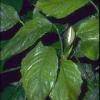 Aglaonema simplex
Aglaonema simplex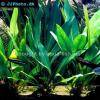 Anubias afzelii
Anubias afzelii Anubias barteri
Anubias barteri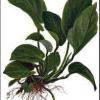 Anubias barteri “Caladiifolia” ‘1705’
Anubias barteri “Caladiifolia” ‘1705’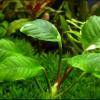 Anubias barteri “Coffeefolia”
Anubias barteri “Coffeefolia”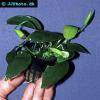 Anubias barteri “Nana”
Anubias barteri “Nana”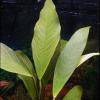 Anubias barteri v. angustifolia
Anubias barteri v. angustifolia Anubias gracilis
Anubias gracilis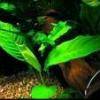 Anubias heterophylla
Anubias heterophylla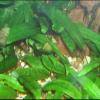 Cryptocoryne affinis
Cryptocoryne affinis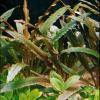 Cryptocoryne albida
Cryptocoryne albida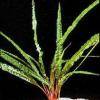 Cryptocoryne balansae
Cryptocoryne balansae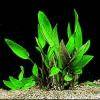 Cryptocoryne becketti
Cryptocoryne becketti Cryptocoryne blassi
Cryptocoryne blassi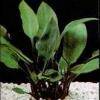 Cryptocoryne ciliata
Cryptocoryne ciliata Cryptocoryne cordata
Cryptocoryne cordata Cryptocoryne nevillii
Cryptocoryne nevillii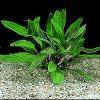 Cryptocoryne petchii
Cryptocoryne petchii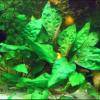 Cryptocoryne pontederiifolia
Cryptocoryne pontederiifolia Cryptocoryne wendtii
Cryptocoryne wendtii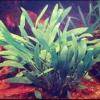 Cryptocoryne willisii
Cryptocoryne willisii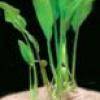 Lagenandra ovata
Lagenandra ovata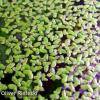 Lemna minor
Lemna minor Pistia stratiotes
Pistia stratiotes Spathiphyllum petite
Spathiphyllum petite Spathiphyllum wallisii
Spathiphyllum wallisii